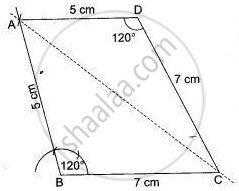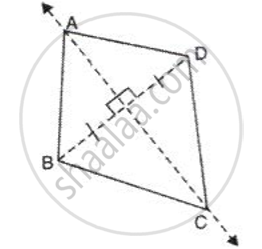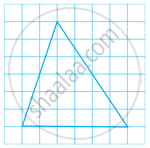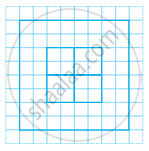Advertisements
Advertisements
Question
Use a ruler and compass only in this question.
Construct the quadrilateral ABCD in which AB = 5 cm, BC = 7 cm and angle ABC = 120°, given that AC is its only line of symmetry.
Solution
Steps of construction :
(1) Draw BC = 7 cm and at B make ∠ABC = 120°
(2) With B as centre and radius = 5 cm, cut BX at A.
(3) With A as centre and radius = 5 cm draw an arc and with C as centre and radius = 7 cm draw another arc. The arcs meet at D.
Thus ABCD is the required quadrilateral.
APPEARS IN
RELATED QUESTIONS
In the following figures, the line of symmetry has been drawn with a dotted line. Identify the corresponding sides and the corresponding angles about the line of symmetry.

Construct a paralIelogra m PQRS in wh i di QR = 5. 4 cm , SR = 6. 0 cm and ∠ Q= 60°. Draw its lines of symmetry, if possible.
Draw an isosceles ΔABC, where BC = 3.5 cm, the base angles C and B = 75°. Use ruler and compass only. Draw all lines of symmetry of the triangle.
Part of geometrical figure is given in each of the diagrams below. Complete the figures, so that the line ‘m’, in each case, is the line of symmetry, of the completed figure. Recognizable free hand sketches, would be awarded full marks.
Which of the following letters has only one line of symmetry?
The number of lines of symmetry in a divider is ______.
The number of lines of symmetry in a 30° – 60° – 90° set square is ______.
If a rectangle has more than two lines of symmetry, then it must be a square.
Copy the triangle in the following figure on squared paper. Draw the line(s) of symmetry, if any and identify the type of triangle. (Some of you may like to trace the figure and try paper-folding first!)

Trace the figure and draw the lines of symmetry, if any:

